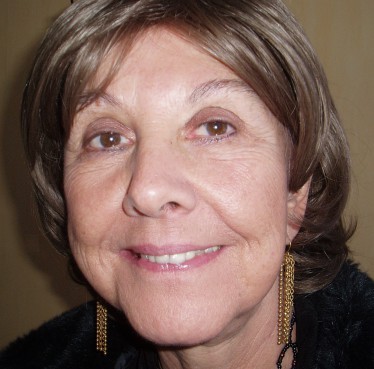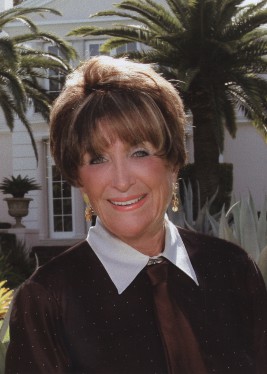
Darby Bannard was committed to color-based and expressionist abstraction for over six decades.
A leading figure in the development of color field painting in the late 1950s and an important American abstract painter, Walter Darby Bannard, professor and head of the painting program in the College of Arts and Sciences’ Department of Art and Art History, passed away on October 2. He was 82.
“Darby’s contributions to the art world will be remembered by his peers, collectors, and critics, and most importantly, by the hundreds of students whom he inspired by his work, his teaching, and his mentoring,” said Perri Lee Roberts, art history professor and chair of the Department of Art and Art History.
During his undergraduate years at Princeton University, Bannard joined fellow students, the painter Frank Stella, and the critic and art historian Michael Fried in conversations that expanded aesthetic definitions and led to an emphasis on opticality as the defining feature of pictorial art.
Bannard continued to explore attributes of color, paint, and surface through innovative methods, striving throughout his career for vital and original expressive means. He was also an important writer on formalist issues in art, serving as an editor for Artforum and a contributor to Art International. His extensive publications date from the 1960s to the present. He joined the University of Miami faculty in 1989 to become chair of the art department.
Bannard was born in 1934 in New Haven, Connecticut. He attended Phillips Exeter Academy and in 1956 graduated from Princeton University. Bannard, who made drawings and watercolors throughout his youth, was self-taught as a painter. He derived inspiration for his earliest paintings from the art of William Baziotes, Theodoros Stamos, and Clyfford Still. In a 2015 interview with UM alumnus Franklin Einspruch for Artcritical.com, Bannard states, “That’s how it is with abstract painting, it just takes you over. I remember looking at one of these little intellectual magazines when I was 16 and I saw a de Kooning painting, and thought, ‘Wow, that’s really cool.’” By the late 1950s, he abandoned the sensitivity inherent in the expressionistic style, instead creating austere minimal paintings characterized by large areas of contrasting color.
In the next decade, he was one of the first artists to blend artist’s materials with commercially produced tinted alkyd resin house paints in a search for greater color options. In a 2015 Artforum review of his second solo exhibition at Berry Campbell, Phyllis Tuchman discusses these early paintings: “The bands, circles, and rectangles tend to be shiny and reflect light, while the other parts of these canvases are covered with matte paint. Bannard mixed pinks and beiges as well as light blues and greens with lots of white. These colors are still radiant. And the artist’s pale palette is as uniquely personal today as it was 50 years ago. You can’t even apply a name to his hues.”
In 1964, Bannard was included in the landmark exhibition Post-Painterly Abstraction, organized by Clement Greenberg and held at the Los Angeles County Museum of Art. His first solo exhibitions were in 1965, at Kasim Gallery, London; Richard Feigen Gallery, Chicago; and Tibor de Nagy Gallery, New York. He was also included that year in the Museum of Modern Art’s “The Responsive Eye.” In 1968, Bannard received a Guggenheim Foundation Fellowship and a National Foundation of the Arts Award.
Around 1970, Bannard’s focus shifted to an exploration of the liquid quality of paint. Drawn to the new acrylic media that was becoming available, he began working on the floor using thick gel surfaces and color suspended in magna or polymer. At the time, he “thought of color as a liquid, flowing over and settling on a roughened surface, changing as it mixed and dried.” His method involved stapling his canvases to slightly raised wooden platforms. After tightly sizing his canvases, he scraped on colored gel with squeegee-like tools. When the surface was dry, he poured colored polymer over it in layers, allowing the paint to find its place. He was drawn at the time to close-valued rather than strong colors and often allowed his pale warm grounds to serve as colors in their own right rather than acting as supports for other colors.
Stated Karen Wilkin in Color as Field (2007): “Bannard probed just how subtle chromatic nuances could be before they became unbroken expanse. In these pictures, even composition could be reduced to a kind of near-negative, an echo of something no longer there.” In the late 1970s, Bannard was instrumental in the retrospective exhibition of the work of Hans Hofmann. He curated the 1976-77 exhibition and wrote the catalogue that accompanied it.
During a painting workshop in Saskatchewan, Canada, in 1981, Bannard developed a kind of gel “drawing” on canvas, in which he applied his paint on large sheets of fiberglass. By the middle of the decade, he had returned to a slower, more subtle system of marking his gel, while also returning to pouring colored polymer. He also reincorporated expressionist methods in his art. In 1987, he began his “brush and cut” paintings, consisting of large scale canvases in which he applied transparent tinted gel with large street brooms and industrial floor squeegees to make painted “drawings” featuring vigorous brushwork and three-dimensional illusions. After moving to Miami, he incorporated more color into his large paintings, while producing small mixed-media landscapes on paper, inspired by the flat land and water and the lowering sun of the Florida Everglades.
Recently, Bannard increased the intensity and juxtoposition of color. The more neutral backgrounds of the past have shifted to all-over color. The surfaces of the paintings are flat and three-dimensional all at once: hot pink and fluorescent green geometric shapes appear to float above and protrude from the flat canvas. These circles reference earlier days, but added now are hard-edge trapezoids. Flat areas of color are spiked by splatters of sparkly gels and raised areas of large sweeping brush-work creating a dance across the surface. Methods and techniques from earlier paintings are combined and used in unison in these dynamic compositions. In 2015 and 2016, Bannard continued to paint with increase vigor creating large-scale paintings up to thirteen feet wide.
Throughout his career, Bannard moved between the poles of expressionism and color field painting, resulting in a body of art that constantly evolved as the artist forthrightly faced the situations that his art presented, reacting to them with rigor and intuition.
In 1983, Bannard held an Invitational Residency at the National Endowment for the Arts. In addition to his position at the University of Miami, he taught at many art schools, including the School of Visual Art, New York. Over the course of his career, Bannard had almost 100 solo exhibitions and had been included in an even greater number of group shows. In 2016, noted art historian Barbara Rose curated a major exhibition for Roberto Polo Gallery in Brussels, Belgium, entitled, Post-Painterly Abstraction: Belgium-USA, featuring paintings by 16 U.S. and Belgian artists including Bannard, Ed Moses, and Larry Poons.
Bannard is represented in public collections across the country as well as abroad. A selection of his museum collections include Albright-Knox Art Gallery, Buffalo, New York; Allen Memorial Art Museum, Oberlin College, Ohio; Baltimore Museum, Maryland; Blanton Museum of Art, The University of Texas, Austin; Brooklyn Museum, New York; Centre Georges Pompidou, Paris; Cleveland Museum, Ohio; Dallas Museum of Fine Art, Texas; Dayton Art Institute, Ohio; Edmonton Art Gallery, Alberta, Canada; Fogg Art Museum, Cambridge, Massachusetts; Honolulu Museum, Hawaii; Indianapolis Museum of Art, Indiana; Kenyon College Art Gallery, Ohio; Larry Aldrich Museum, Ridgefield, Connecticut; Lowe Art Museum, Coral Gables, Florida; McNay Art Museum, San Antonio, Texas; Metropolitan Museum of Art, New York; Montclair Art Museum, New Jersey; Museum of Fine Arts, Boston; The Museum of Fine Arts, Houston, Texas; Museum of Modern Art, New York; National Gallery of Victoria, Australia; New Jersey State Museum, Trenton; Newark Museum, New Jersey; Portland Art Museum, Oregon; Princeton University Art Museum, New Jersey; Rose Art Museum, Brandeis University, Waltham, Massachusetts; Smithsonian American Art Museum, Washington, D.C.; Solomon R. Guggenheim Museum, New York; Storm King Art Center, New Windsor, New York; the Toledo Museum of Art, Ohio; Whitney Museum of American Art, New York; and Williams College Museum of Art, Williamstown, Massachusetts.









